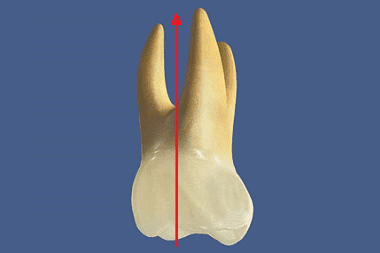Dentistry >>>> How to avoid tooth extraction?
How to avoid tooth extraction?

Very often, the defeat of one of the roots of a multi-rooted tooth raises the question of tooth extraction. But in surgical dentistry, there are ways to preserve a tooth or part of it, taking into account the operations: resection of the root apex or hemisection of the tooth.
Tooth hemisection is performed on teeth with two or three roots, one of which is affected or impassable for instrumental treatment; or in cases of a crack in the tooth, involving one of the roots, half or a third of the tooth; either when the bottom of the tooth cavity is damaged (for example, perforation) or in the absence of adequate methods of therapeutic treatment.
Contraindications to tooth hemisection are:
- Allergy to anesthesia,
- Advanced age,
- The presence of blood diseases,
- Diabetes,
- Cardiovascular diseases,
- Resorption of the bone tissue of the alveolar process in the area of the tooth of interest,
- Obstruction of the root canals of the tooth remaining for support.
The operation of tooth hemisection is performed under local anesthesia. During the operation, the coronal part of the tooth is sawn vertically up to the bifurcation zone (the zone of tooth branching into the roots), then it is detached by the instrument and removed together with the root. Often, for an operation in the area of the tooth, the gums are exfoliated, then after the removal of a part of the tooth with the root, the exfoliated gum flap is sutured.
Hemisection avoids tooth extraction and maintains its functional load while chewing food. Teeth with a stable position are subject to hemisection. The operation of hemisection of a tooth aims to preserve half of the tooth with a stable root (s) and to consider the rest of the tooth as a support for the future prosthesis (crown or bridge).

Read

Read



























